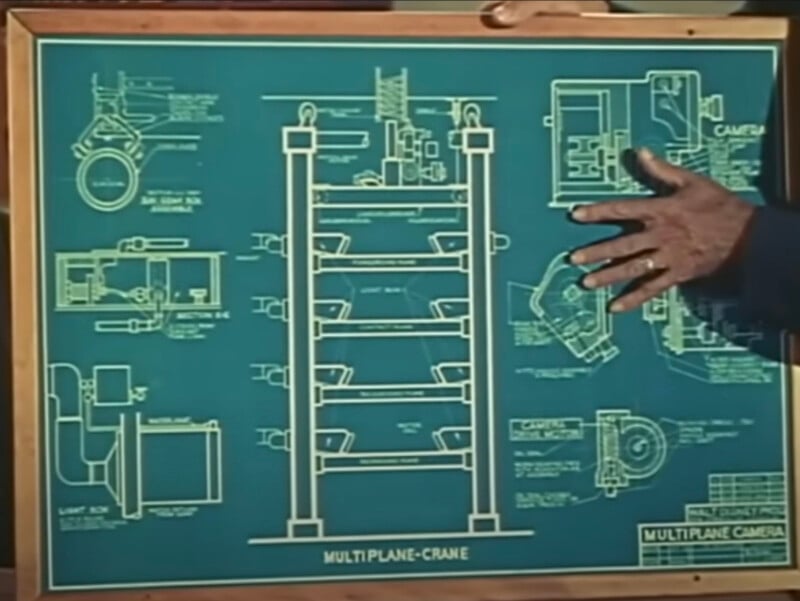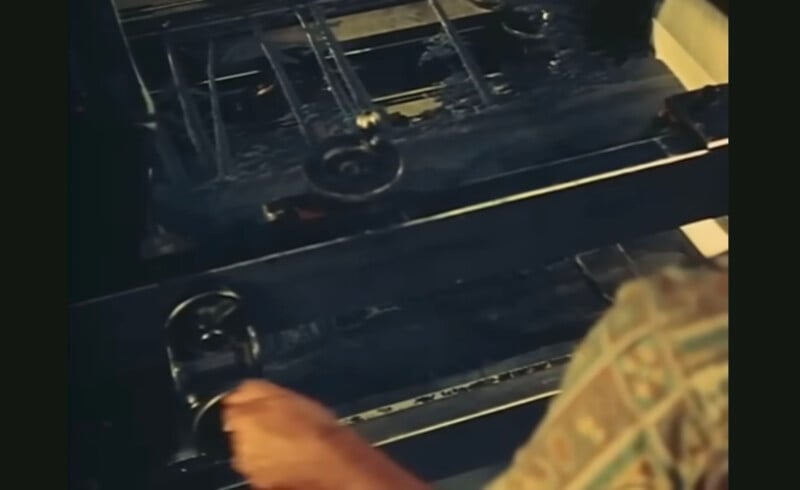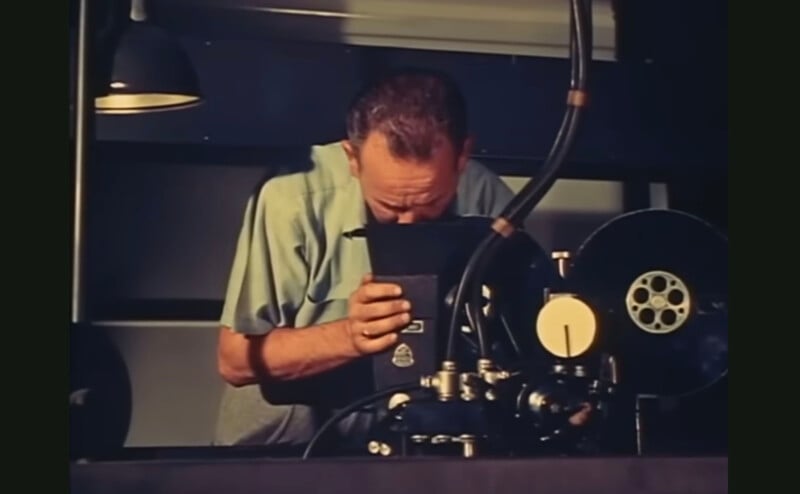How Disney’s Multiplane Camera Achieved the Illusion of Depth
For this week’s edition of Historical Friday, we’re going to take a look at Disney’s revolutionary multiplane camera system which was used for incredible effect in classic movies like Snow White and the Seven Dwarfs (1937), Pinocchio (1940), and Bambi (1942).
In the charming video above, Walt Disney explains the technique which makes use of oil painted backdrops that are each positioned on a separate pane of glass. These layers could move at different speeds and distances from the camera to create a more dynamic and immersive sense of depth.
The camera pointed down to the painted layers below, which were operated by mechanical controls. Disney called the whole setup a “super cartoon camera”.
The camera could be moved up or down to create zooming effects. Once the layers were set, animators would capture one frame at a time, making subtle adjustments between frames. This allowed for smooth and natural movement, unlike traditional single-layer animation. Disney films ran at 24 frames per second, meaning 24 individual photographs made up one second of animation.


This technique was groundbreaking in animation history because it brought cinematic depth to 2D films, making Disney’s animations look more immersive and dynamic.
In the video above, filmed in 1957, Disney points out that static paintings don’t make great backdrops because zooming in makes elements, such as the Moon, appear bigger.
“The problem was, how to take a painting and make it behave like a real piece of scenery under the camera,” explains Disney.
Disney solved this problem by separating the different elements in any given scene and setting them apart on different planes, hence the multiplane system. It means the Moon plane is always farthest away from the camera and the closest plane has things like trees on.
“With our original picture broken down in this manner, it is possible to control the relative speed with which each individual part of it moves to or away from the camera,” Disney says.


The multiplane system was first used in The Old Mill (1937), a short film, but that was mainly a test run so it could be used in the Snow White feature film that same year.
Sometimes, the production team would move the background and foreground planes in opposite directions to create a rotation effect. For example, when the Evil Queen drinks her potion and her surroundings spin around her.
The Disney multiplane camera system used up to seven layers of artwork. It required dozens of technicians to operate who worked to advance the planes, according to the director of photography.
The system was used in Cinderella, Fantasia, Bambi, Peter Pan, Alice in Wonderland, Sleeping Beauty, Pinocchio, and The Jungle Book. The final Disney film to use the camera system was The Little Mermaid (1989) but that was outsourced to another facility as Disney’s cameras were no longer operational.
The multiplane camera system was eventually replaced by digital technology, specifically computer-assisted animation and 3D rendering techniques.